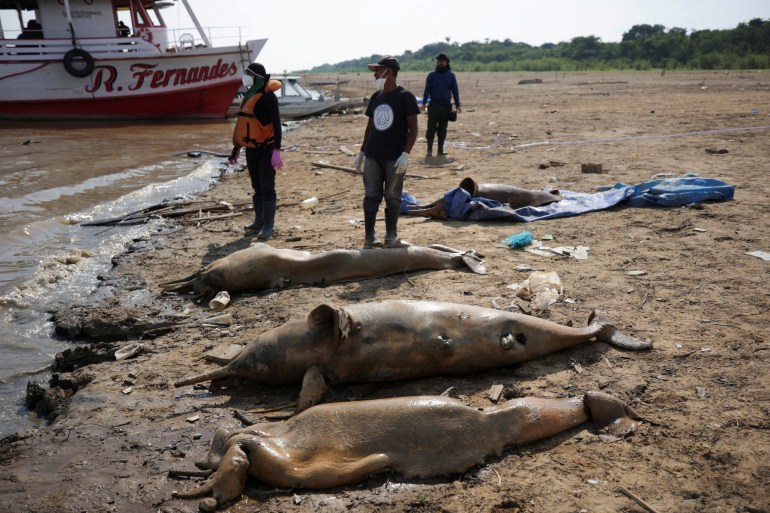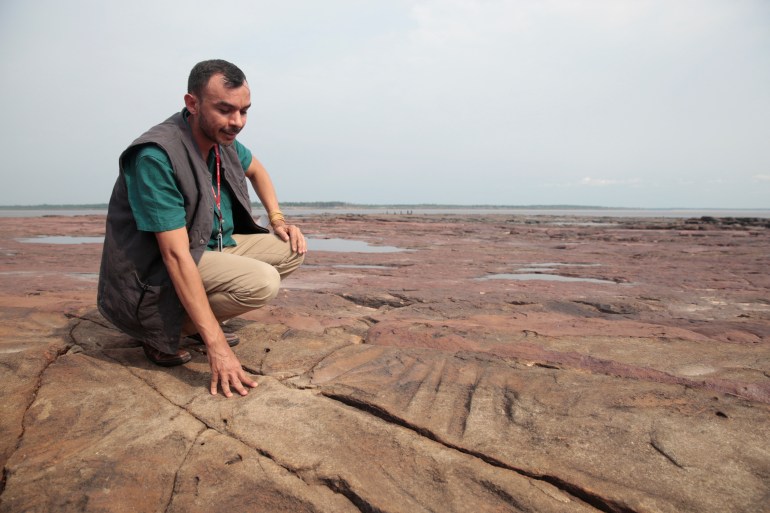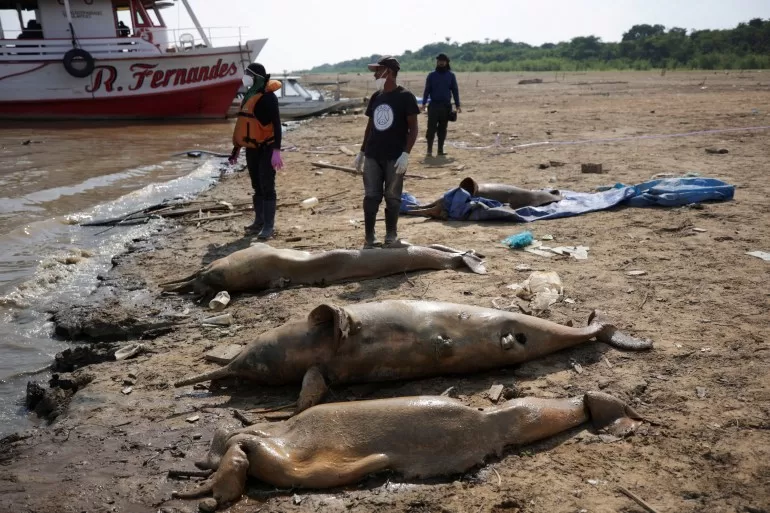New report says climate change responsible for draining rivers, wreaking havoc on biodiversity and communities.
A report released on Wednesday by World Weather Attribution, an international network of scientists, showed that human-induced global warming was draining waterways in the world’s largest rainforest, killing hundreds of endangered dolphins and isolating millions of people who rely on the region’s waterways for food, transport and income.
Scientists studied events from June to November last year, finding that global warming caused by the burning of fossil fuels had made drought 30 times more likely, producing the extreme temperatures that have caused water levels to slump to their lowest points on record.
The effects of climate change on the region are twofold, reducing rainfall, but also producing hotter conditions that evaporate moisture from plants and soil, increasing the severity of the drought.
While both climate change and El Nino contributed about equally to a reduction in rainfall, higher global temperatures were the biggest reason for the drought, according to the study.
All nine Amazon rainforest countries – including Brazil, Colombia, Venezuela and Peru – have been hit by the drought, which is expected to get worse after the end of the rainy season in May.
Battle for survival
The drought has had a devastating effect on people’s lives, with many forced to make long journeys to access food, medicine and other essentials. They have been dragging boats over dried-up sections of the Amazon River, according to Simphiwe Stewart, a researcher with the Netherlands-based Red Cross Red Crescent Climate Centre and co-author of the study.

Along the Amazon River, people have seen their crops wither and fish disappear. With travel impossible due to low rivers, they form long lines on riverbanks to receive relief supplies, the report says.
In Manaus, the region’s largest city, more than two million residents choked for months on wildfire smoke.
Researchers in Brazil said the low water levels killed at least 178 of the Amazon’s endangered pink and grey river dolphins last year. Thousands of fish have died due to low oxygen levels in the tributaries.
Point of no return
The report comes out after the planet endured its hottest year on record.
The Amazon is considered vital to tackling climate change because of the vast amounts of greenhouse gases that its trees absorb.
“We should be really worried with the health of the Amazon forest,” said Regina Rodrigues, a researcher at the Federal University of Santa Catarina in Brazil who co-authored the report.
Rodrigues pointed out that while the region has faced at least three other intense droughts in the past 20 years, this drought’s scope was unprecedented and affected the entire Amazon basin.
In Brazil, a major tributary of the Amazon fell to its lowest point since records began in 1902, with smaller streams virtually disappearing.
Researchers have said the drought could worsen forest fires, which when coupled with climate change and deforestation could push the Amazon more quickly towards a point of no return after which the biome dries out and ceases to be lush rainforest.

“What is now about a one-in-50-year event would have been much less likely to occur in a 1.2-degree [C] cooler world. If we continue to warm the climate, this combination of low rainfall and high temperatures will become even more frequent,” said study co-author Friederike Otto, a climate scientist at the Imperial College of London.
The planet is closer than ever to the 1.5 degrees Celsius (2.7 degrees Fahrenheit) increase since pre-industrial times that nations had hoped to stay within to avoid the worst consequences of climate change, such as deadly heat, rising seas, flooding and wildfires.
